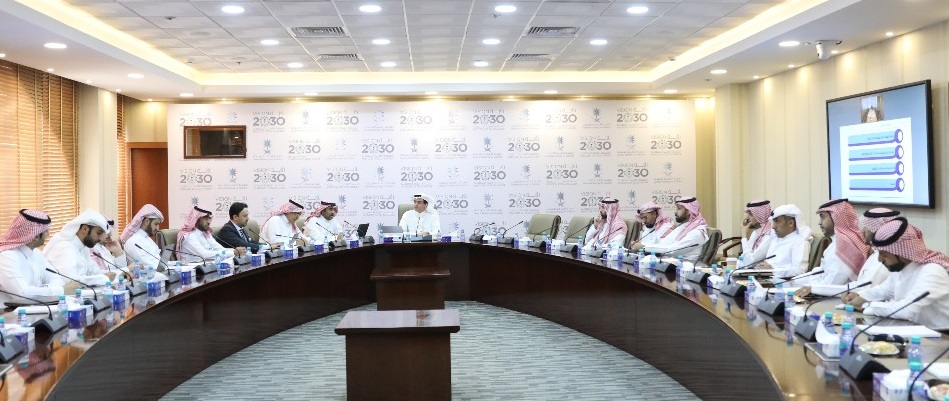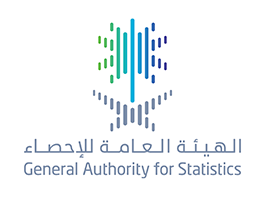The Task Teams of the (Coordination Committee of the General Authority for Statistics) discuss ways of exchanging data between government entities
16-07-2018
With the participation of 31 government entities over a period of 5 days
The Task Teams of the (Coordination Committee of the General Authority for Statistics) discuss ways of exchanging data between government entities
Within the framework of the General Authority for Statistics' efforts to facilitate and exchange data and information with various government agencies, the coordination committee meetings of the Coordination Committee of the General Authority for Statistics took place during the five days from July 1st to 5th , 2018, with the participation of 31 government entities.
The official spokesman of the General Authority for Statistics, Tayseer Al-Mufrrej, explained that the coordination teams discussed several topics, including the discussion of the general frameworks for the coordination work between the various entities in the joint works. They also reviewed the challenges and obstacles facing the task teams and discussed the appropriate solutions. In addition, they reviewed the statistical work carried out during the last period. The government agencies also made a number of development proposals for data dissemination and raising statistical awareness, in addition to data exchange.
On the other hand, Mr. Al-Mufrrej said that the Coordination Committee of the General Authority for Statistics includes a number of coordination teams, including the coordination Task team for Economic Statistics, which includes, the Ministry of Economy and Planning, the Ministry of Health, the General Authority for Sport, the Ministry of Trade and Investment, the Ministry of Labor and Social Development , Ministry of Energy, Industry and Mineral Resources, Ministry of Finance, Council of Saudi Chambers, Saudi Customs, General Authority for Investment, Saudi Arabian Monetary Agency, General Authority for Tourism and National Heritage, and Small and Medium Enterprises Authority.
The coordination task team on Environment Statistics includes: The Ministry of Municipal and Rural Affairs, the Ministry of Environment, Water and Agriculture, the General Authority for Meteorology and Environmental Protection, Saline water conversion Corporation and the Royal Commission for Jubail and Yanbu.
The coordination task team on Energy Statistics includes: The Ministry of Energy, Industry and Mineral Resources, the Saline Water Conversion Corporation, King Abdullah City for Atomic and Renewable Energy, the Ministry of Energy's National Renewable Energy Program, the Royal Commission for Jubail and Yanbu and the Electricity & Co-Generation Regulatory Authority.
The coordination task team of Masdar program includes: The Ministry of Health, Ministry of Housing, Ministry of Commerce and Investment, Ministry of Education, Ministry of Municipal and Rural Affairs, Ministry of Environment, Water and Agriculture, Ministry of Civil Service, Saudi Arabian Monetary Agency, General Organization for Social Insurance , The Public Pension Agency , the General Auditing Bureau, the Yesr Program, the National Information Center of the Ministry of the Interior, the Ministry of Justice, the Ministry of Economy and Planning, the Ministry of Finance and the Ministry of Labor and Social Development.
While the coordination task team of the social statistics includes: The Ministry of Justice, the Ministry of Housing, the Ministry of Labor and Social Development, the Ministry of Health, the Ministry of Municipal and Rural Affairs, the Public Prosecution, the Ministry of the Interior, the Ministry of Civil Service, the Ministry of Education and the Saudi Post.
It is worth mentioning that the meetings were held as preparatory meetings for the meeting of the Coordination Committee of the General Authority for Statistics, which will be held on the tenth of next September. The "Coordination Committee" was formed permanently to coordinate the statistical work between the General Authority for Statistics and related entities, in accordance with the decision of the Council of Ministers (11) dated 13/1/1437 AH on the organization of the Commission, aimed at activating and organizing the statistical work through the establishment of a comprehensive, accurate and unified statistical system, in addition to the follow-up of its implementation. It also develops the plans and programs necessary to meet statistical needs; in order to serve the developmental plans, scientific research, and various activities.





